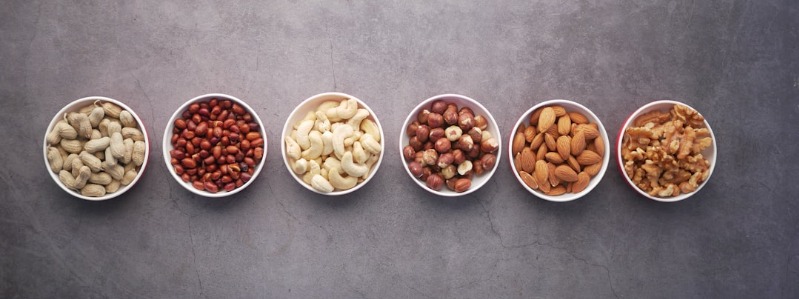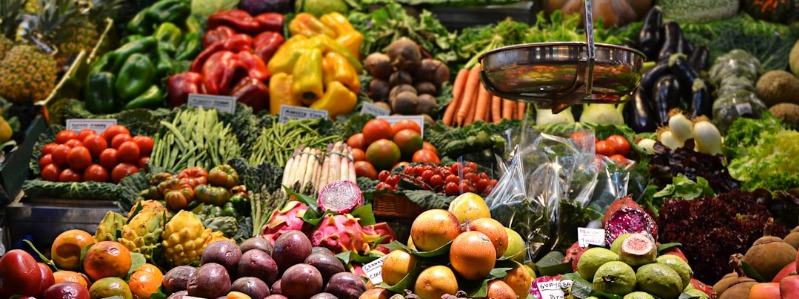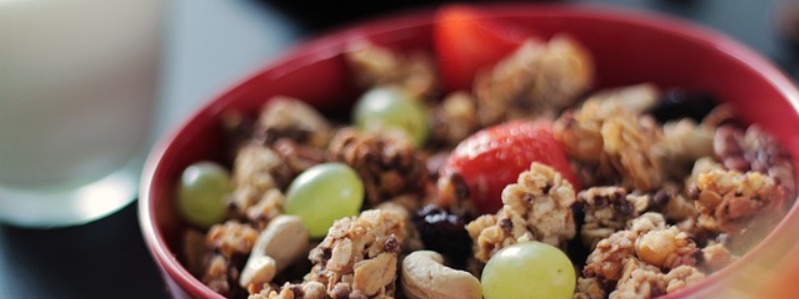Healthy Diet For Women Over 40
In nutrition, diet is the sum of food consumed by a person or other organism. The word diet implies using nutrition for health or weight-management reasons, which are often related.
“We are what we eat.” is very true since foods are the materials that form our bodies. A healthy diet for women over 40 needs special attention because their metabolism slows by up to 10% per decade.
Although humans are omnivores, each culture and each person has some food preferences or food taboos. These may be due to personal tastes or ethical reasons. Individual dietary choices may be more or less healthy.

Our body requires the ingestion and absorption of vitamins, minerals, and food energy from carbohydrates, proteins, and fats to perform optimally. Dietary habits and choices significantly affect quality of life, health, and longevity.
Starting at age 30, most people begin to lose about half a pound of the metabolism-revving tissue each year. For women over 40, it is easier to gain weight than to lose weight since our metabolism slowing by up to 10 % per decade. At age 50s, the rate doubles.
The Disadvantage of Having Less Muscle Mass
- makes us weaker
- making it harder to do simple activities
So we should make an effort to keep our muscle mass. We can do that by eating a suitable diet and doing suitable exercise. Research shows that when combined with regular exercise, what we eat and when we eat are the secret to building muscle mass and a key driver of our metabolism.
Before we read more about the diet, let’s watch the video below:
How to Manage A Healthy Diet for Women Over 40?
Eat a Balanced Diet
Eat protein-rich foods ( 10 % – 35 % of our daily calorie intake ) to support calorie-burning muscle mass, and follow a moderate-calorie diet. Around half of our plate should be filled with vegetables. Eat a balanced and varied diet rich in vegetables, fruits, and whole grains. Eat rainbow fruits and vegetables to ensure we get all the nutrients the body needs. Learn further about the benefits of eating the rainbow color of fruits and vegetables here. Leeks are rich in vitamin A, which is beneficial for avoiding cataracts. We should consider taking it into our daily diet.
Eat Foods Rich in Calcium to Prevent Osteoporosis
Calcium and vitamin D play a big role in minimizing bone loss in our 40s. Our calcium count should be 500-700 mg daily, and our vitamin D intake should be 800-1000 IU per day. Milk, almonds, salmon, fish, and fortified cereal are calcium-source foods. Although vitamin D is added to milk and some other foods, we will probably need a supplement to be sure we are getting enough. A capsule containing 800 to 1,000 IU should do the trick.

Be careful in consuming calcium supplements. Recent evidence indicates that taking high-dose calcium supplements doesn’t prevent fractures and may even be risky. Calcium and vitamin D supplements don’t prevent fractures. Studies of calcium revealed a couple of downsides to high levels of calcium supplementation but not to calcium obtained through a regular diet.
In the Woman’s Health Initiative, women taking the calcium-vitamin D combination had a higher risk of developing kidney stones than those who got the placebo. High doses of calcium from supplements may promote stone formation by increasing the amount of calcium eliminated in the urine. A 2010 analysis of 15 randomized controlled trials also linked calcium supplementation with an increased risk of a heart attack.
Fat should not exceed 30 % of our daily calorie intake.
The recommendations for daily fat intake fall within the same general range: 20-30% of total calorie intake.
We need to know that 1 gram of fat contains 9 calories. Figure out 20-30% of our ideal daily calorie intake. Divide the amount by 9. The answer is the ideal range for how many grams of fat we should eat daily.

Our minds should open to new possibilities on our plates.
We should try eating functional foods we have never tried before. Functional food is food given an additional function—for example, omega-3-enriched eggs. The functional component is Omega-3 fatty acids ( DHA ). The fatty acid profile of the egg yolks is altered by changing the feed the hens receive. Hens receive feed rich in omega-3s, typically from flaxseed, fish oil, or sea algae. So, omega-3s increase, and the number of saturated fats decreases. The result is lower triglycerides and cholesterol. It reduces the risk of coronary heart disease.
Eat less than we have ever eaten before.
As we age, we need fewer calories per day. This will help us reduce fat and maintain our ideal weight.
How To Get Your Metabolism Fired Up Again
Increasing body metabolism means increasing the burning of calories in our bodies. If our metabolism is good, we will have more energy, be fitter, and have a controlled weight. Metabolism is a term derived from Greek, which means change or transformation.
We associate metabolism with various processes that occur in the body. Metabolism converts food and other substances into energy or other metabolic products. It is an important process. It allows the body to use foods and other resources to work, repair damage, heal, and clean toxins from the body.
Metabolism helps digestion absorb nutrients. It is most influenced by nutrition, hydration, and physical activity. Each is an important aspect of optimal metabolic health. When one is lacking, it lowers the metabolic rate, affecting our bodies’ health.
Here are 10 Tips to Increase Body Metabolism So That Our Bodies Become Fit And Have The Ideal Body Weight:
1. Pay Attention to Protein Intake.
We use protein to maintain muscle health. Protein can help burn calories up to as much as 35 percent. This is called the “thermic effect” of food (TEF). That is far more than the 5 percent of calories burned by fat or the 5-15 required for carbs.
Muscle-protein synthesis goes up after we eat a meal with protein, and our body switches back to muscle-breakdown mode a few hours after we’ve eaten. Normally, the ups and downs equal out, and our muscle mass stays the same. However, eating too little protein for too long causes our muscles to shrink and decrease our metabolism.
According to Dr. Apovian, a Nutrition and Weight Management Professor of Medicine at Boston University, the Recommended Daily Allowance of protein is 1,5 grams/kg of ideal body weight to shed body fat successfully and maintain lean muscle mass.
Cutting back causes our body to rob our muscles of energy, leaving us thinner and weaker. Not only does this make our clothing fit poorly, but we also begin to burn fewer calories. So even if we eat the same amount, we can easily regain the weight we want to lose. Eat 20 to 30 g of Protein at Each Meal.
We should vary our protein sources. There are many delicious vegetarian sources of protein. Try consuming fish, tofu, tempeh, lentils, beans, nuts, grains, seeds, quinoa, buckwheat, mycoprotein ( Quorn ), seitan, hummus, pita, spirulina, and other sources of protein to get a healthy diet for women over 40. According to Harvard Medical School and Massachusetts General Hospital researchers, replacing meat with plant-based protein sources may be healthier, reducing the risk of death by 34 percent.
2. Eat Foods That Increase Body Metabolism.
Protein and fiber are two kinds of foods that boost our metabolism. We need to limit calories to lose weight, but too low calories can harm our metabolism. When the body lacks calories, then the body will metabolize and burn muscle tissue to be energy. So, we should eat enough and not do a diet that is too tight. To help speed up our metabolism, we should eat some of these healthy foods:
- Apple
Apples are low in calories, and their fiber content can help people lose weight. Another beneficial fruit is the pear. Eat apples and pears with the skin because the skin contains the most fiber. But remember to wash these fruits to avoid the pesticide poison left behind.
- Green Vegetables
Green leafy vegetables, such as spinach, are high in fiber and rich in calcium. Studies have found an association between calcium and weight loss.
- Brown Rice
Choose foods high in fiber, such as brown rice, oatmeal, and whole-grain bread. Eating these foods will make the stomach full faster, reducing the amount of food that enters the body.
- Green Tea
Research shows that green tea can increase metabolism. It also provides antioxidant substances that prevent premature aging.
- Spicy Foods
Spicy foods, such as chili or pepper, also increase metabolism. This is because pepper and chili contain chemical compounds called capsaicin. The capsaicin can speed up the metabolism process.
3. Don’t Forget Breakfast
Breakfast increases the body’s metabolism, helping it stay fit throughout the day. People who do not eat breakfast are 4.5 times more likely to be overweight. Breakfast must have enough protein, low fat, and high fiber.
Eating protein at breakfast is especially important because the longest period of muscle breakdown occurs at night when we are sleeping and not eating for hours. If we skip breakfast or start our day with a protein-light meal, we miss out on flipping that muscle-building switch back on. Our body needs about 30g of protein each meal to maximize muscle protein synthesis. Protein plays an important role in a healthy diet for women over 40.
4. Caffeine
Caffeine is a nervous system stimulant found in tea and coffee. It can increase metabolic rate by 3-11%. According to a study in Japan, a cup of green tea will increase metabolism by 12 percent. The catechins in tea are also beneficial for speeding up metabolism.
5. Eat Foods Containing Fiber
Research shows fiber can help the body burn up to 30 percent of fat. Research also shows people who eat less fiber suffer from obesity. Increase fiber intake by eating fruits, vegetables, and grains. So, the body gets enough fiber, no less than 25 grams per day.
6. Drink Cold Water
Before you eat, drink a glass of water. Drinking water increases the number of calories we burn. Drink enough water to avoid dehydration. It also avoids the snacking of high-calorie foods.
Researchers in Germany found that drinking six glasses of cold water can lose 50 calories daily. The body needs energy to heat the cold water and to fit the body’s temperature.
7. Organic Foods
Research from Canada reports a study result about the correlation between body toxicity and weight loss. Too much body toxicity can make losing weight difficult. This is because the toxins slow down the process of burning energy in the body.
Another study also found that pesticides can trigger weight gain. So, avoid accumulating toxins from food. If possible, consume chemical-free organic fruits and vegetables.
8. Eat Foods Rich in Iron
The body needs iron to form red blood cells, which circulate the oxygen muscles need to burn fat. To increase iron intake, eat fat-free meat, beans, and spinach.
9. Fulfill Vitamin D Necessity.
Vitamin D deficiency has been associated with metabolic diseases and lipid dysregulations, such as diabetes and metabolic syndrome. We can get vitamin D from sunbathing and foods rich in vitamin D.
10. Drink Milk
Research shows that calcium deficiency can slow down the metabolic process. Dietary calcium works better than supplemental calcium. Three or more servings of dairy foods and beverages daily could speed up calorie burning in adults.




